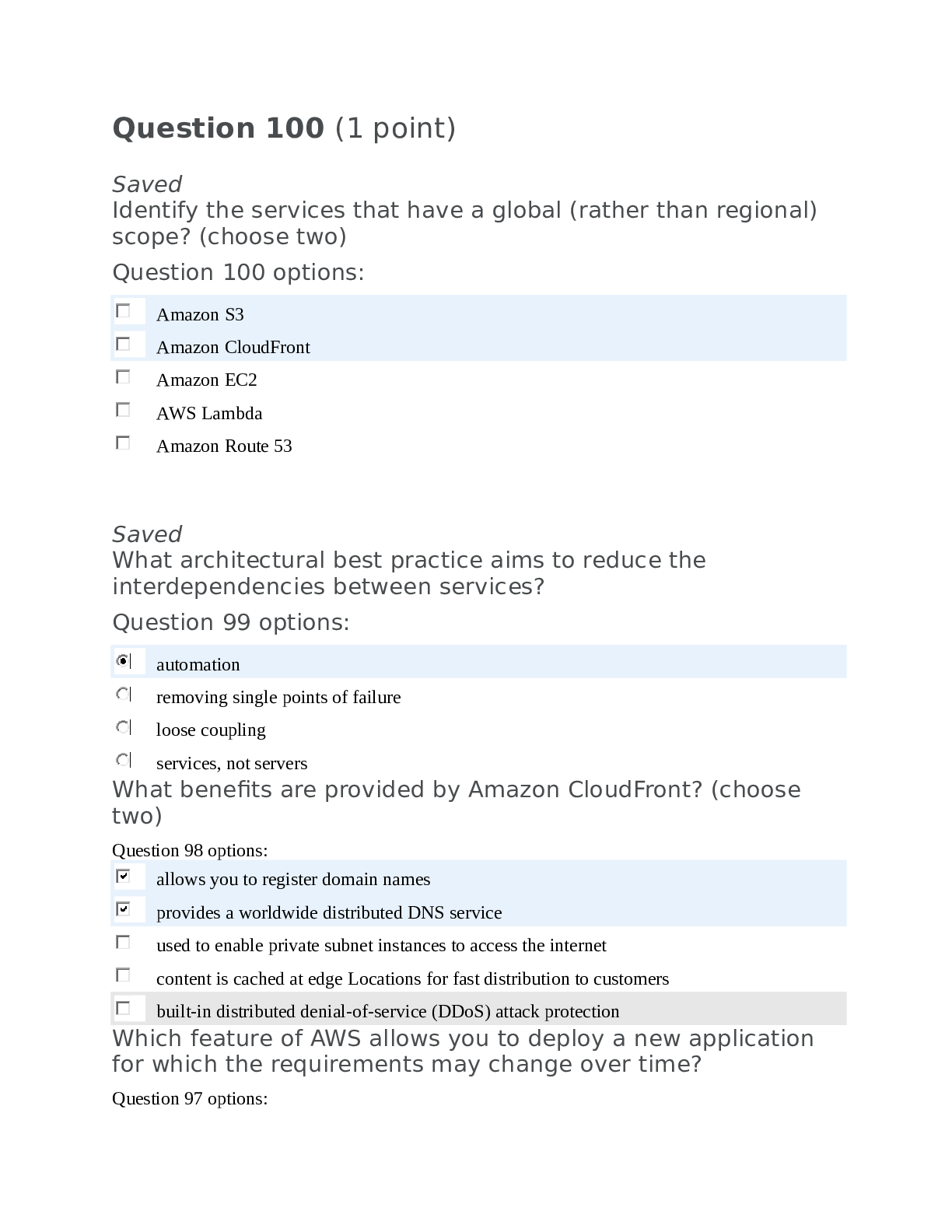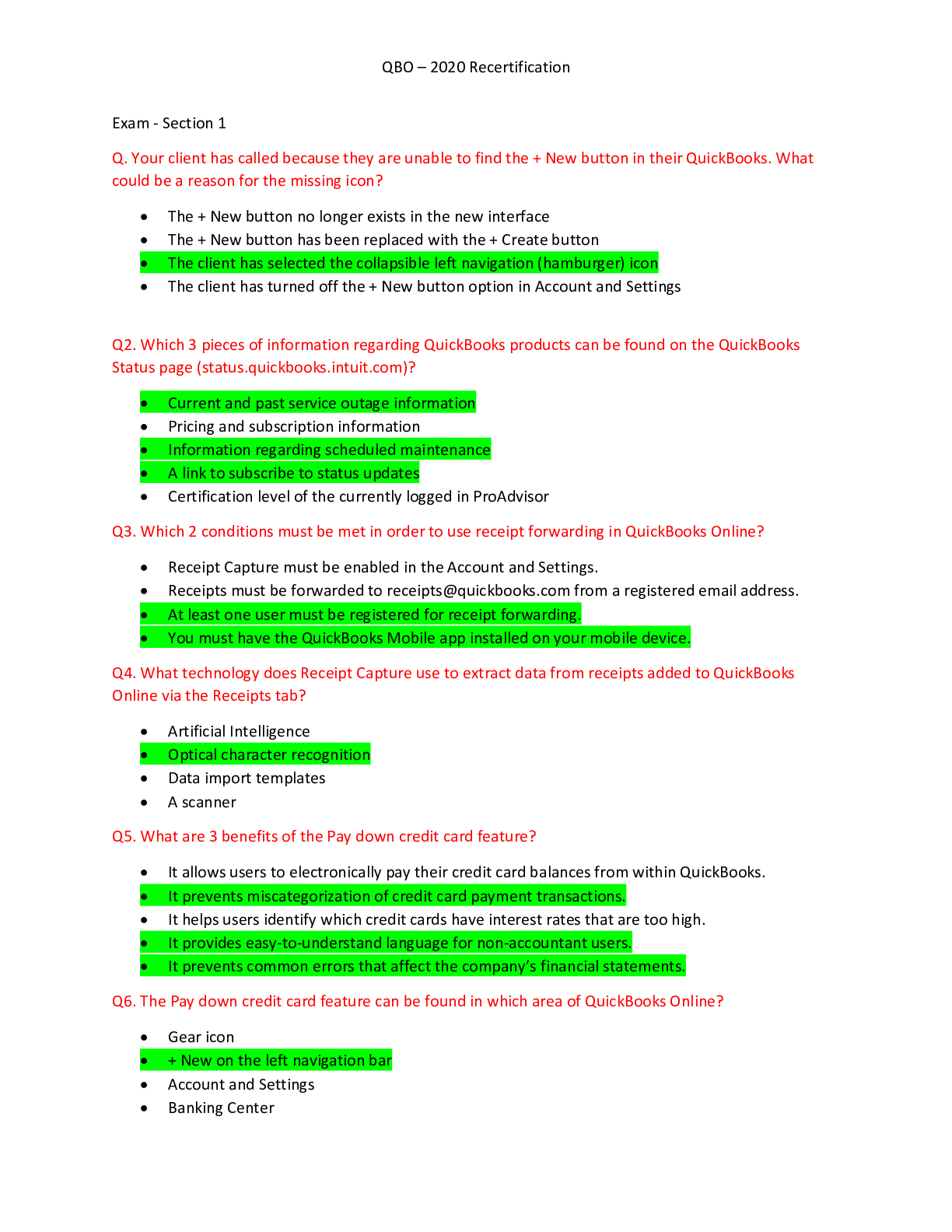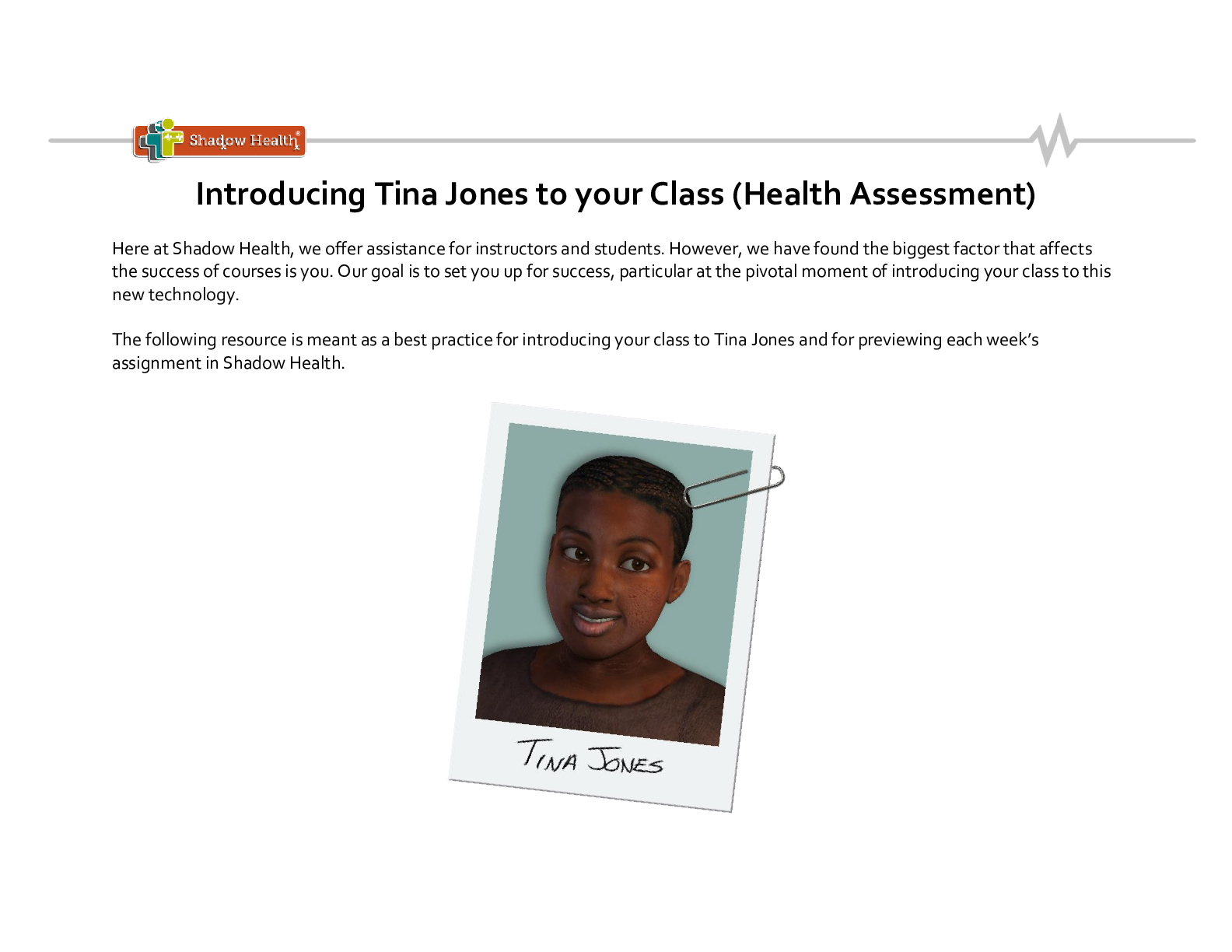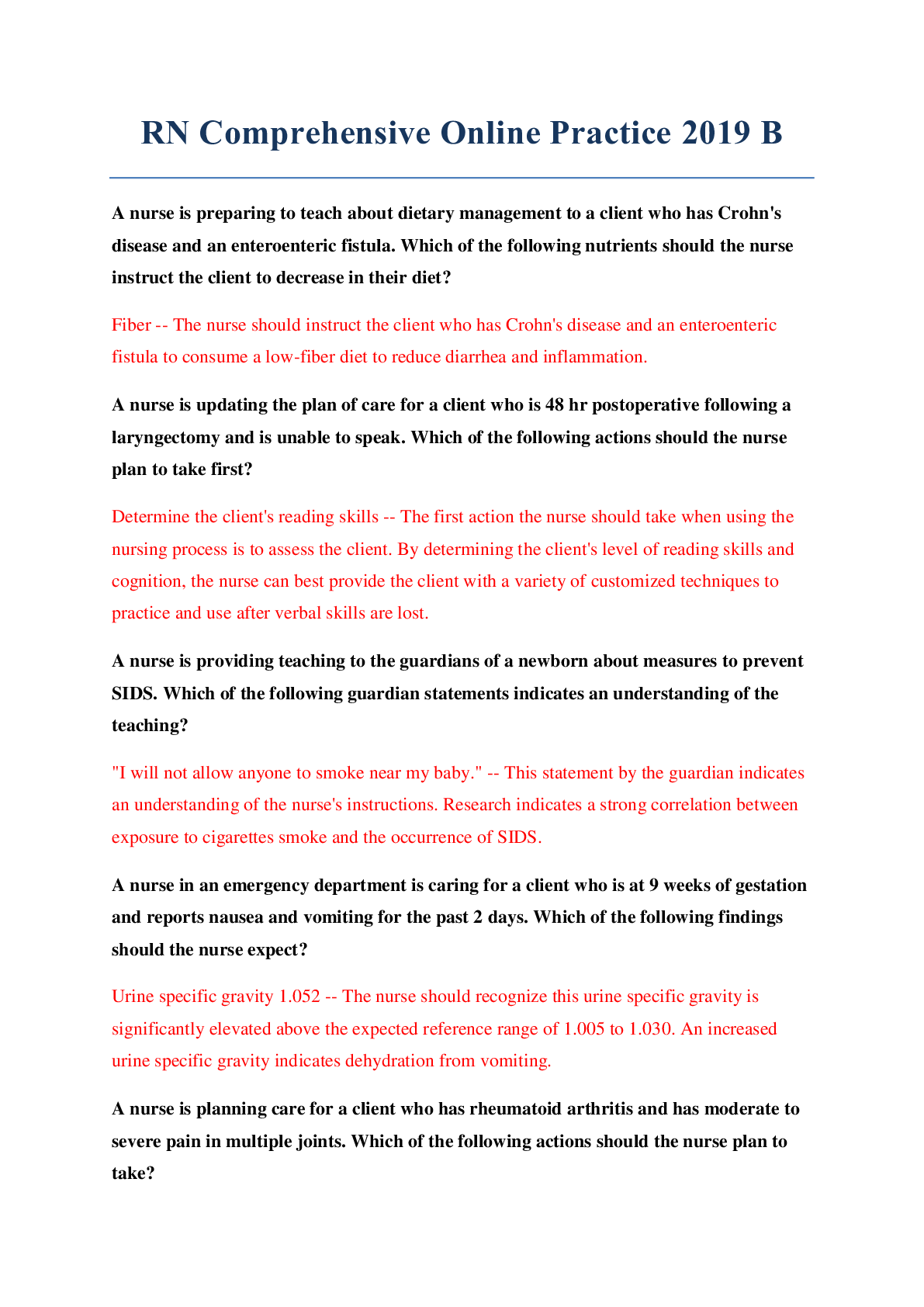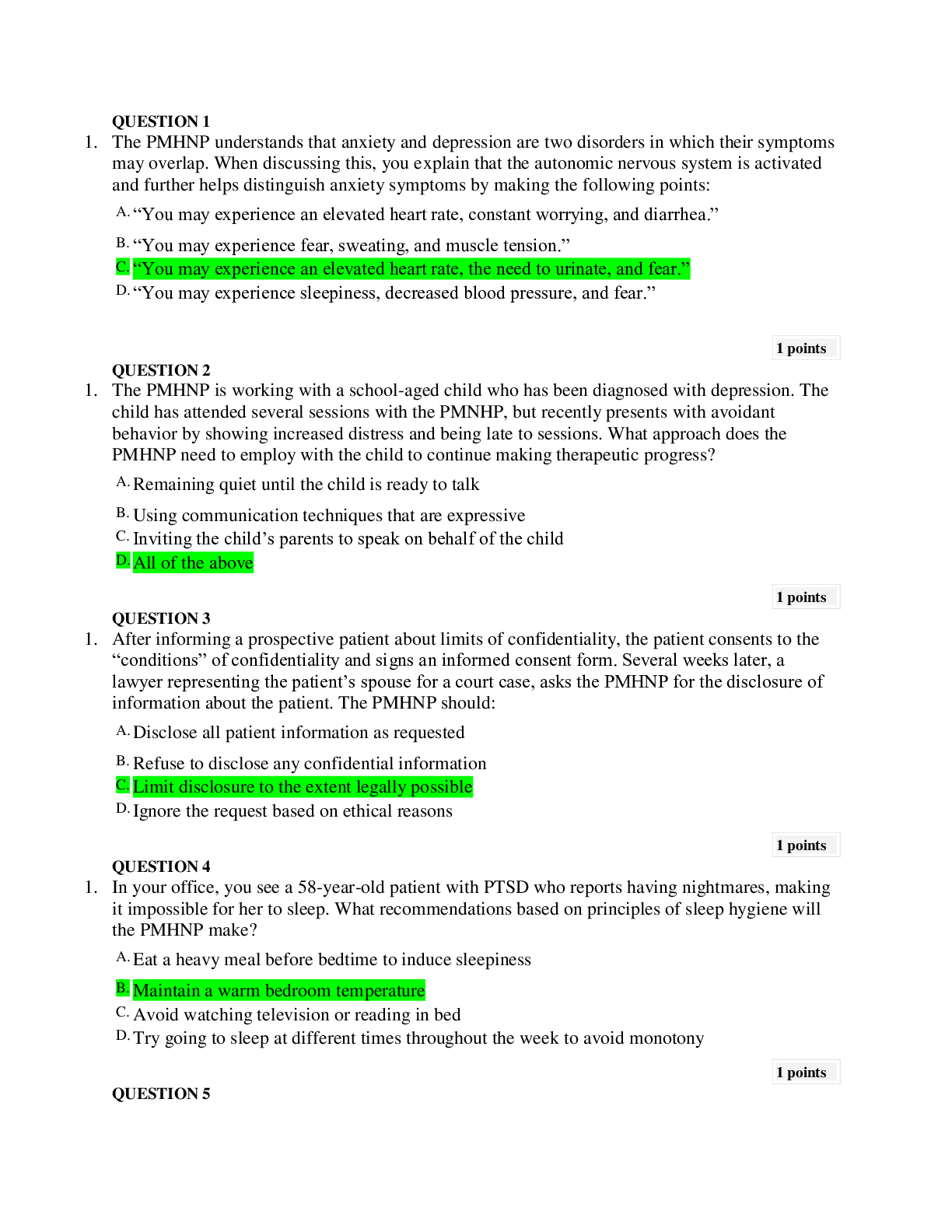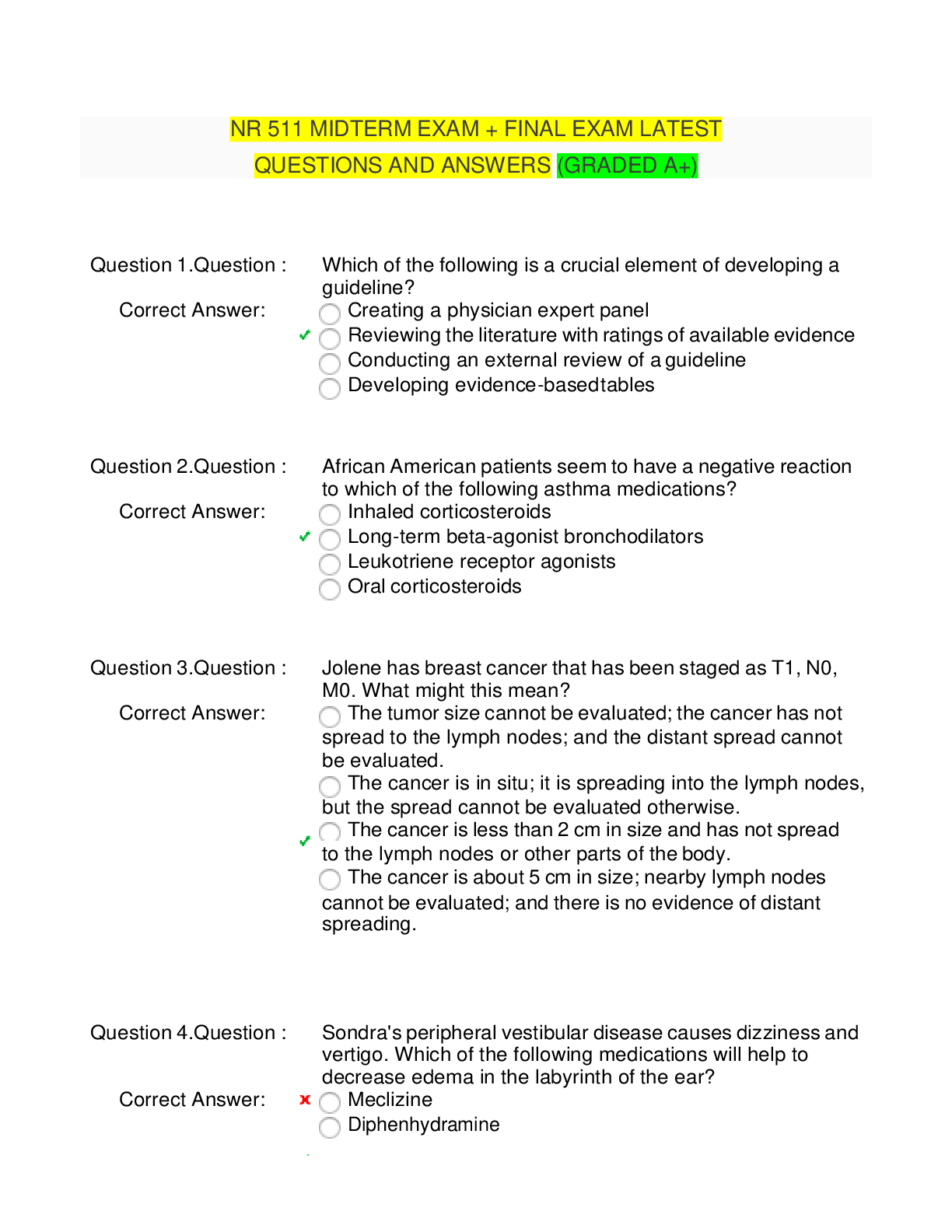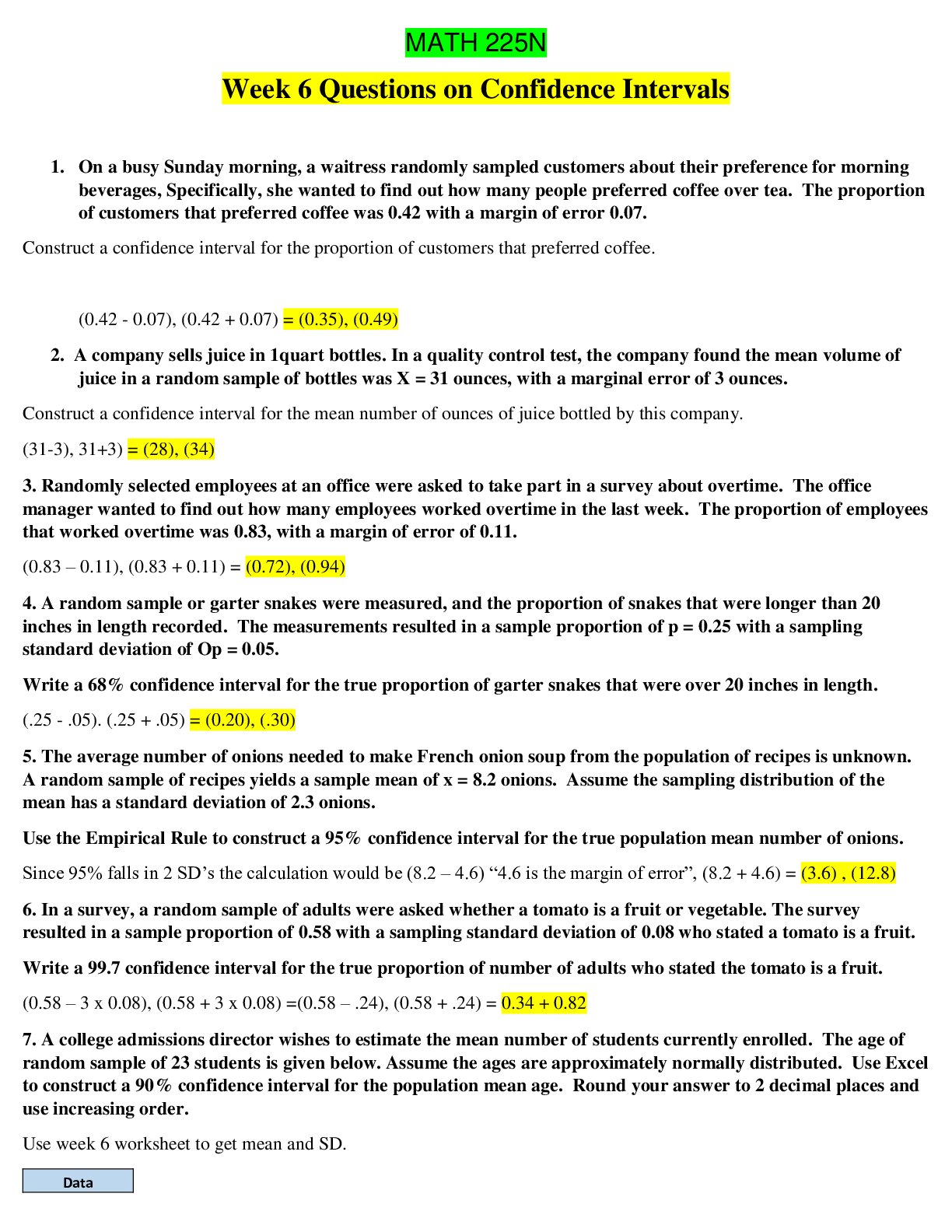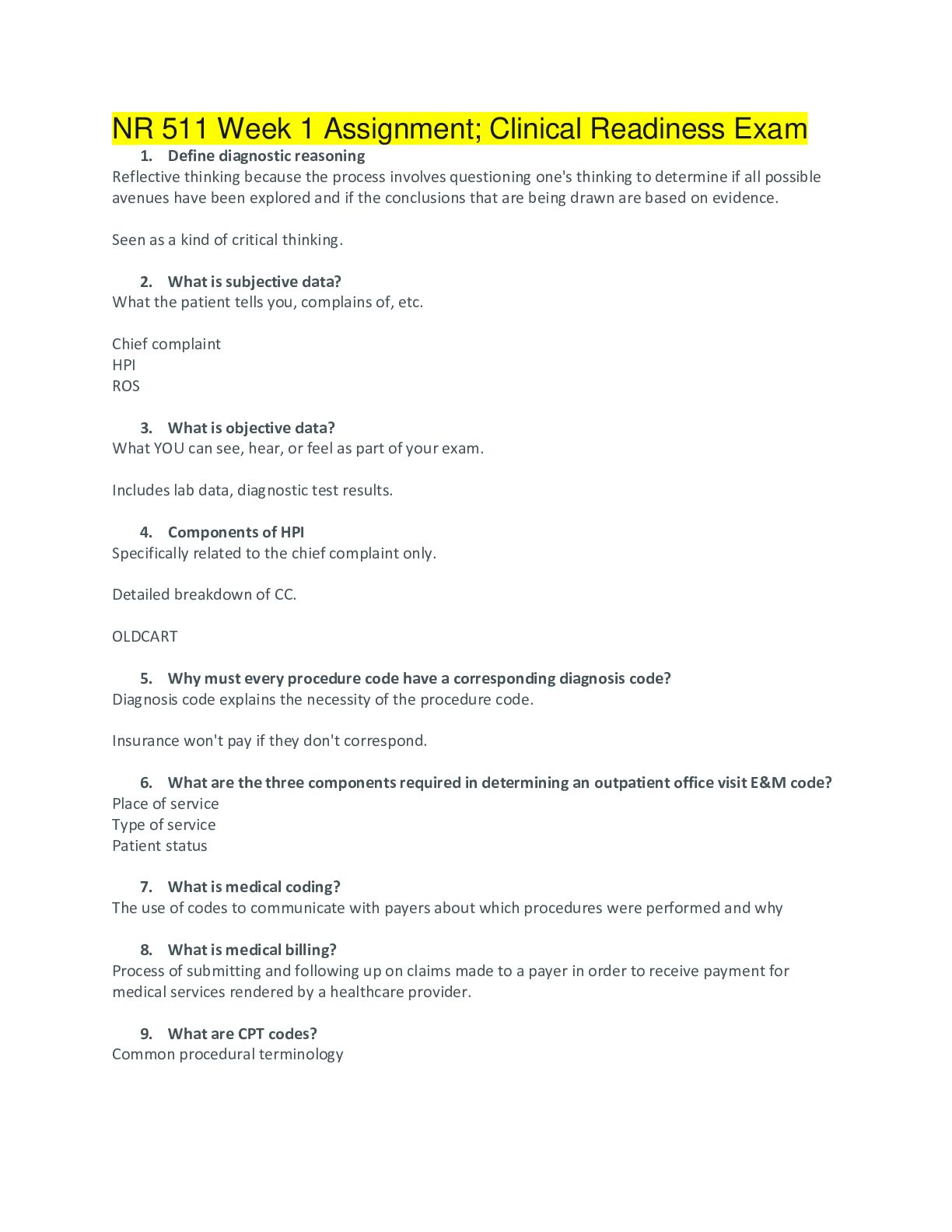Grand Canyon University ECN 601 Exam 2. 30 Questions and Answers
Document Content and Description Below
Highlighted questions are the ones that I got wrong 1 Indirect price discrimination differs from direct price discrimination because: • In indirect price discrimination, high value consumers can s... ometimes still get the low price • In direct price discrimination, firms do not have to worry about cannibalizing. • Direct price discrimination encourages rivals to enter but indirect discrimination does not. • There is no difference between the two. • • 2 What is it called when each additional worker hired contributes successively smaller amounts of output? • Diminishing profitability • Diminishing total product • Diminishing marginal product • None of the above • • 3 Jim has a better chance of having his offer accepted, since the seller does not have any outside offers. • Jim has a better chance of having his offer accepted, since the seller does not have any outside offers. • Jim has lower chances of having his offer accepted, since the seller has more outside offers. • The disagreement value for the seller has increased • Only A and C • • 4 For a production function with a diminishing, but positive, marginal product of labor: • Output increases at an increasing rate as more workers are employed • Output increases at a decreasing rate as more workers are employed. • Output declines as more workers are employed. • The effects on marginal product are unknown. • • 5 Nash equilibrium is: • Where one player maximizes payoff and the other does not. • When one player's strategy is the best response to the other player's strategy. • Where the outcome is always efficient. • Difficult to determine. • • 6 Moral hazard implies that: • Insured individuals exercise less care because they have less incentive to do so. • Insured individuals exercise more care because they have less incentive to do so. • Insured individuals exercise more care because they have more incentive to do so. • Insured individuals exercise less care because they have more incentive to do so. • • 7 An HVAC company is selling heating and cooling equipment. It has separate sales and marketing units. The marketing unit would want to: ( Not A or D) • Price aggressively to ensure sales are made. • Price less aggressively to ensure that profitable sales are made. • Price at cost to maximize sales. • None of the above • Question Points: 0.0 / 3.33333 • 8 If the VP of a product launch thinks that a particular product would be profitable, but ended up launching an unprofitable product, this will be a: • Type I error • Type II error • Neither Type I nor Type II error • False positive • • 9 Half of all your potential customers would pay $10 for your product, but the other half would only pay $8. You cannot tell them apart. Your marginal costs are $4. If you set the price at $8, the expected profit is: • $3 • $4 • $5 • $6 • • 10 Which of the following is a screen against adverse selection? • Insurance companies require homeowners to have smoke detectors • Rearview cameras in cars. • nstalling engine monitors to track driving habits of the insured. • Prospective secretaries must take a typing test before being hired. • • 11 Compared to simple pricing, price discrimination leads to: • Loss in profits. • Increased revenue. • Consumer surplus being converted to producer surplus. • Both B and C. • • 12 Use the table provided to answer the following question. If the firm decides to only offer the high-end wok, what is the highest price it can charge the chefs? • $70 • $80 • $90 • $100 • • 13 Which of the following would not be illegal according to the RobinsonPatman Act? (Not B or D) • "Party Packers" getting 10 cents off every pack of ribbon they buy after 1000 units • "Fred’s Farms" offering 50 cents off a crate of strawberries to retailers to match other suppliers with similar rates. • "Sam’s Sandwiches" receiving 5 cents off per pound of cheese • All of the above • Question Points: 0.0 / 3.33333 • 14 In a two-person repeated game, a tit-for-tat strategy is: • When each player pursues his or her own self-interest without any cooperation. • When players start off as noncooperative and then cooperate when one or both players show interest in colluding. • When players start by cooperating and then mimic the other player's last move. • When neither player defects. • • 15 The tradeoff between ____ and _____ is represented as the labor supply curve.( Not A or C) • Work and wages • Work and leisure • Wages and productivity • Technology and wages • Question Points: 0.0 / 3.33333 • 16 You experiment by offering free warranties for your product in market A but not in market B. Sales in Market A rise from 240 to 360 units per week while sales in Market B rise from 410 to 430. The difference-in-difference estimate of the effect of the free warranty is: • 80 units • 100 units • 120 units • 140 units • • 17 Tom wants to avoid any accidents on the work floor of his factory. If an accident does occur, it would cost him $500,000 in damages. Installing safety equipment would decrease the probability of an accident occurring from 20% to 10%. However, the equipment costs $20,000 to install. What is his expected loss after installing the safety equipment? • $20,000 • $50,000 • $100,000 • $125,000 • • 18 Three possibilities are equally likely and have payoffs of $6, $12, and $24. The expected value is: • $4 • $14 • $6 • $7 • • 19 The general rule to increase profits when two close complementary brands are jointly owned is ( Not B) • Increase prices for both brands. • Decrease prices for both brands. • Increase prices on one brand, and decrease prices it for the other. • Increase prices on one brand, but keeping the prices of the second brand constant. • Question Points: 0.0 / 3.33333 • 20 Which of the following is not an example of risk aversion? • You lock your garage when you have expensive workshop tools. • You are more careful when you buy a more expensive car. • Individuals tend to gamble more with their money when the future is uncertain. • You only go swimming when the lifeguard is on duty. • • 21 For direct price discrimination to work effectively: • The low-valued customers should not be able to engage in arbitrage. • You need to charge the same price to the different groups. • Both groups should have the same elasticity of demand. • None of the above • • 22 Tom wants to avoid any accidents on the work floor of his factory. If an accident does occur, it would cost him $500,000 in damages. Installing safety equipment would decrease the probability of an accident occurring from 20% to 10%. However, the equipment costs $20,000 to install. Would Tom install the safety equipment? • Yes, because it costs him less than it is worth. • Yes, because it costs him more than it is worth. • No, because it costs him more than it is worth. • No, because it costs him less than it is worth. • • 23 Use the table provided to answer the following question. If the groups are of equal size and the firm can only set one price, how should the firm price the high-end wok? Price low and sell to both groups. • Price high and sell only to the professional chefs. • Price low and sell only to the home users. • All of the above • • 24 Which of the following is true? • Incentive compensation imposes no risks on the agents and thus should not affect their compensation. • Incentive compensation imposes risk on the agent but need not be compensated for. • Incentive compensation imposes risk on the agent for which the agent should be compensated • Incentive compensation is a bad idea • • 25 Which of the following is a violation of antitrust laws? • A firm discussing/fixing price with its competitors. • Making arrangements to stay out each other's markets. • Merging with the competitor to eliminate competition. • All of the above • • 26 The optimal strategy in a Vickery auction is to: • Bid aggressively. • Bid above your value since you would be paying the second highest price. • Bid exactly your value. • Bid below your value. • • 27 Viceroy Vacations is deciding on how to price its vacation packages. Which of the following strategies would you suggest? • Price the flight, hotel, and car separately. • Advertise them as an all-inclusive vacations. • Give them away as free vacations to everyone. • Close down your company. No one goes on vacations anymore. • • 28 In a principal-agent relationship • The principal wants the agent to act on her own behalf. • The agent wants the principal to act on his behalf. • The principal wants the agent to act on the behalf of others. • The agent wants the principal to act on the behalf of others. • • 29 The pricing rule MR=MC holds for: • All firms • Single product firms • Multiple product firms • None of the above • • 30 For jointly owned substitute products, cannibalization leads to MR______MC. • Higher than • Lower than • Equals • None of the above [Show More]
Last updated: 1 year ago
Preview 1 out of 12 pages
Instant download
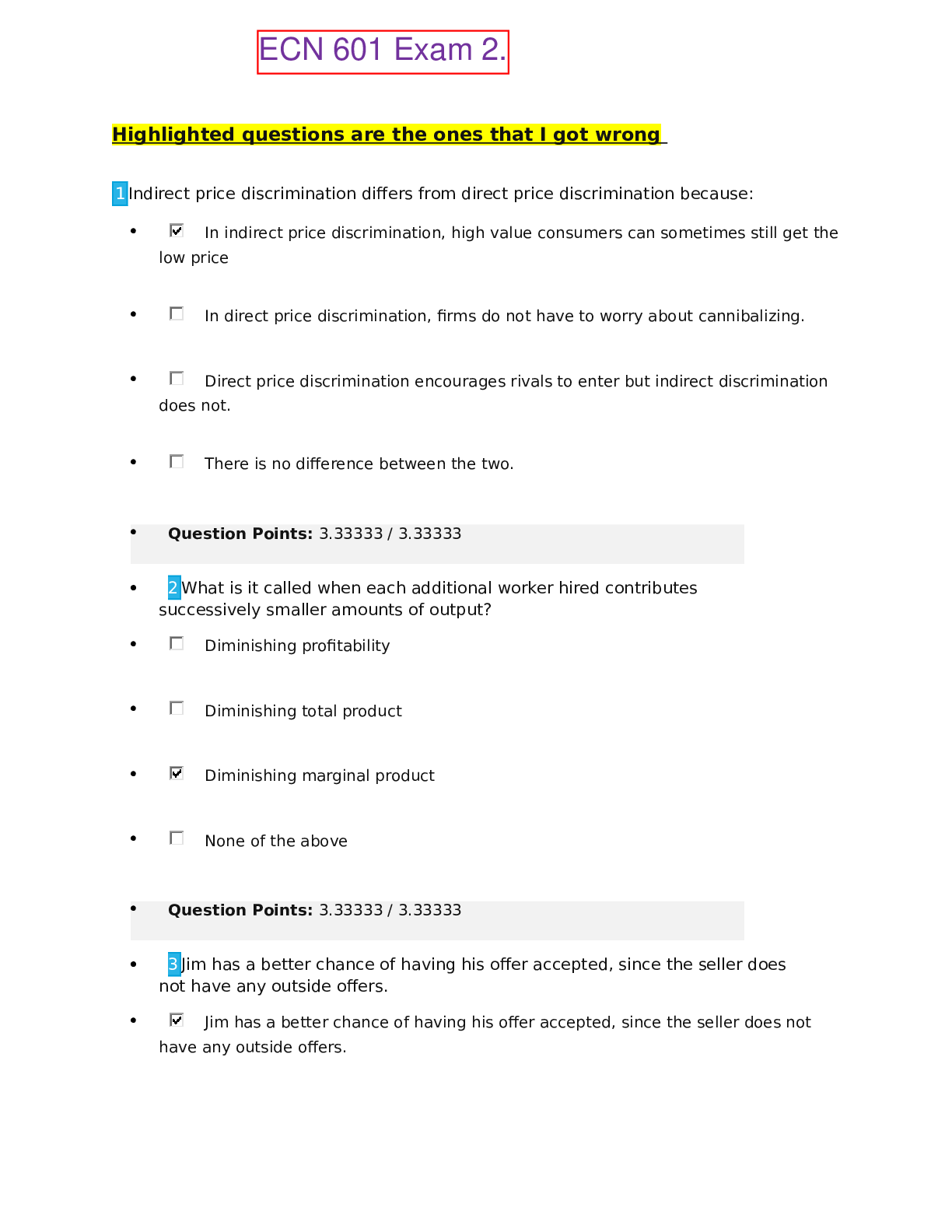
Buy this document to get the full access instantly
Instant Download Access after purchase
Add to cartInstant download
Reviews( 0 )
Document information
Connected school, study & course
About the document
Uploaded On
Apr 15, 2022
Number of pages
12
Written in
Additional information
This document has been written for:
Uploaded
Apr 15, 2022
Downloads
0
Views
56



